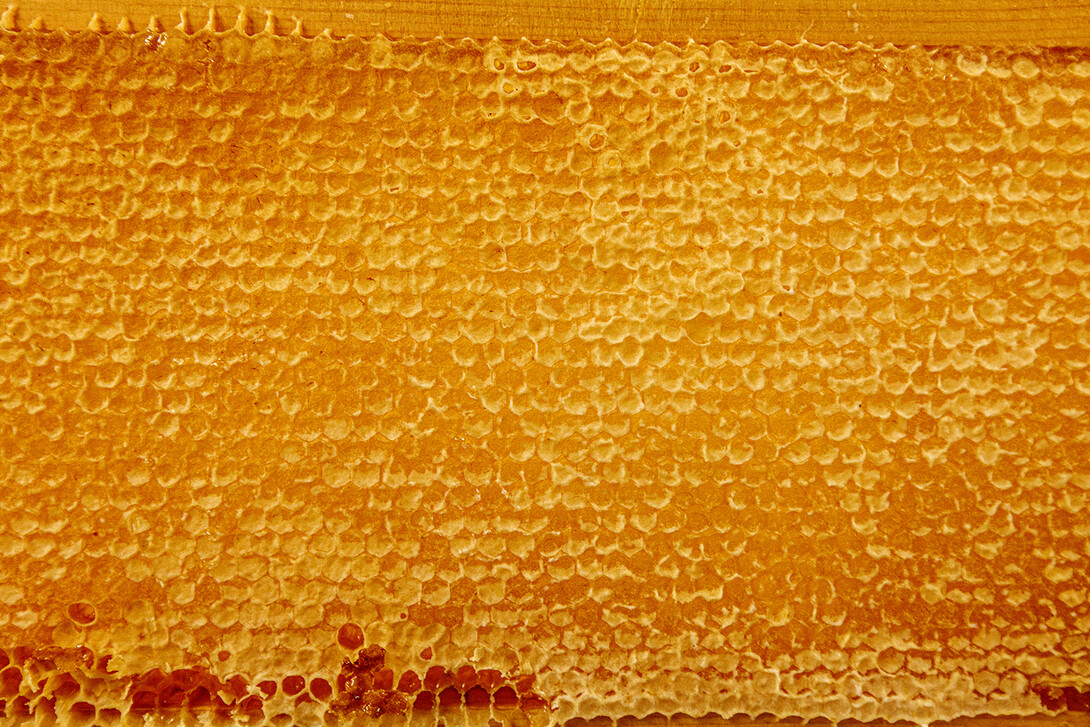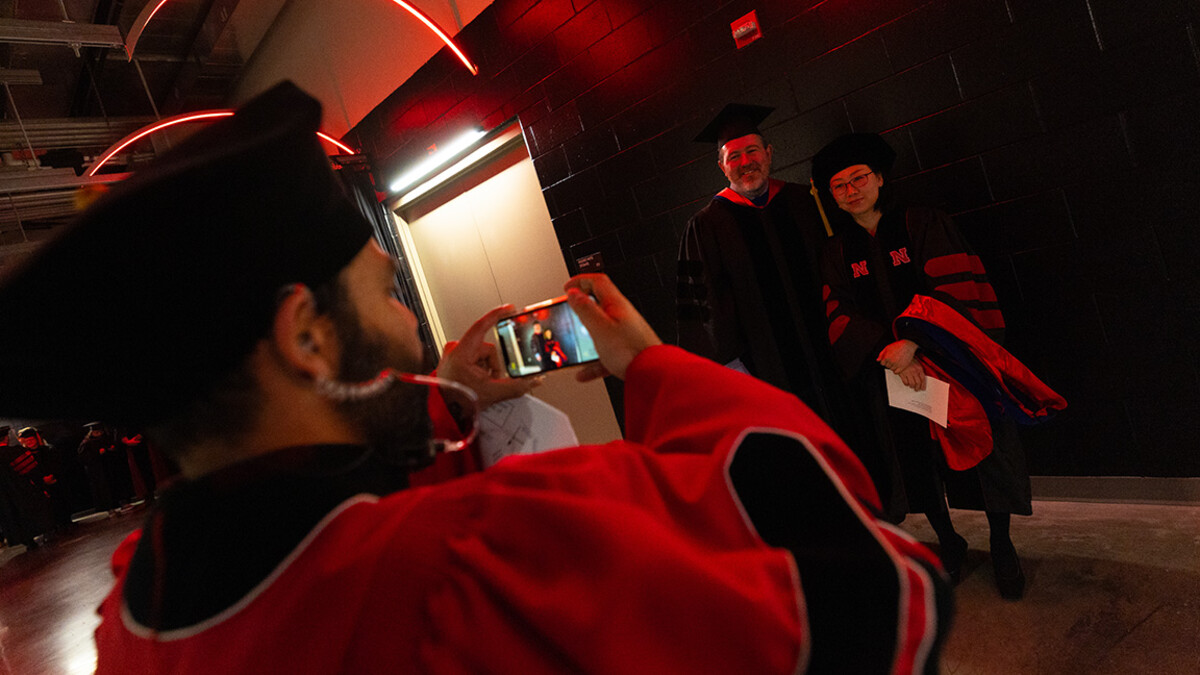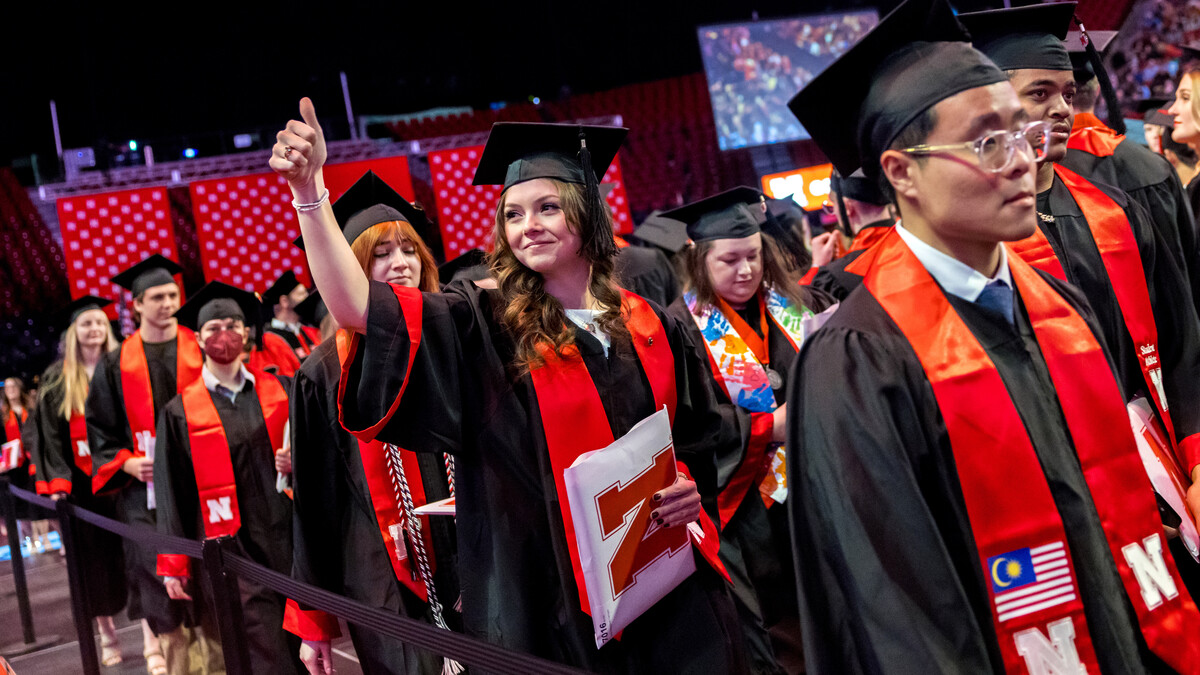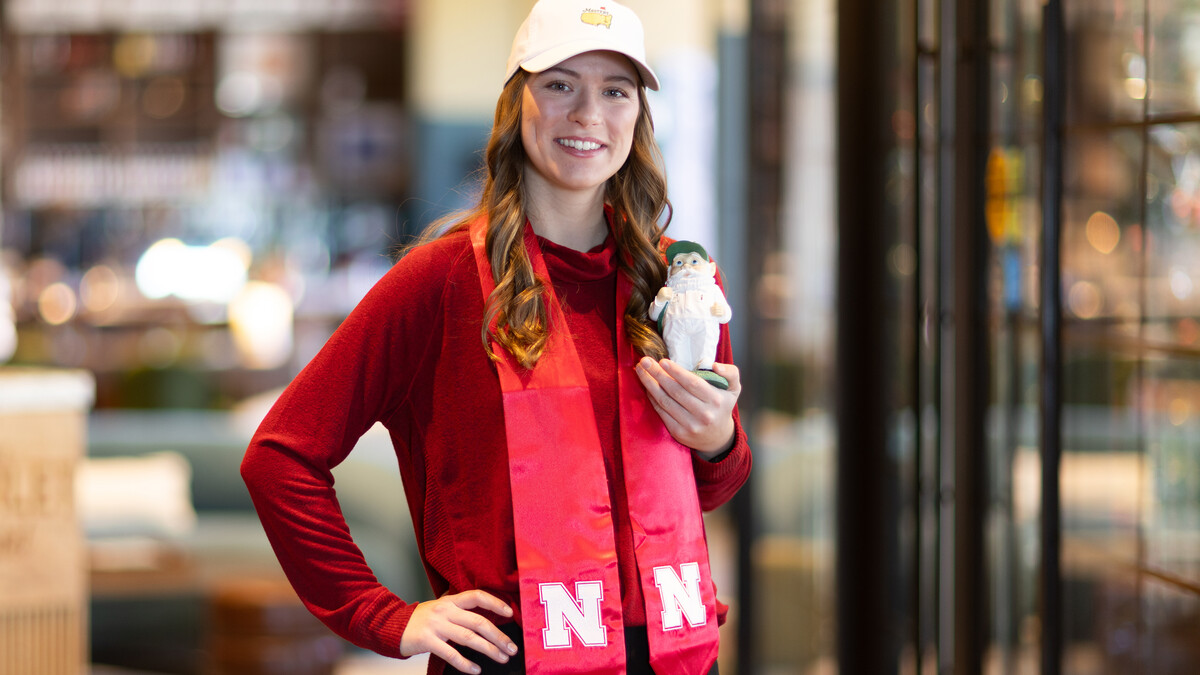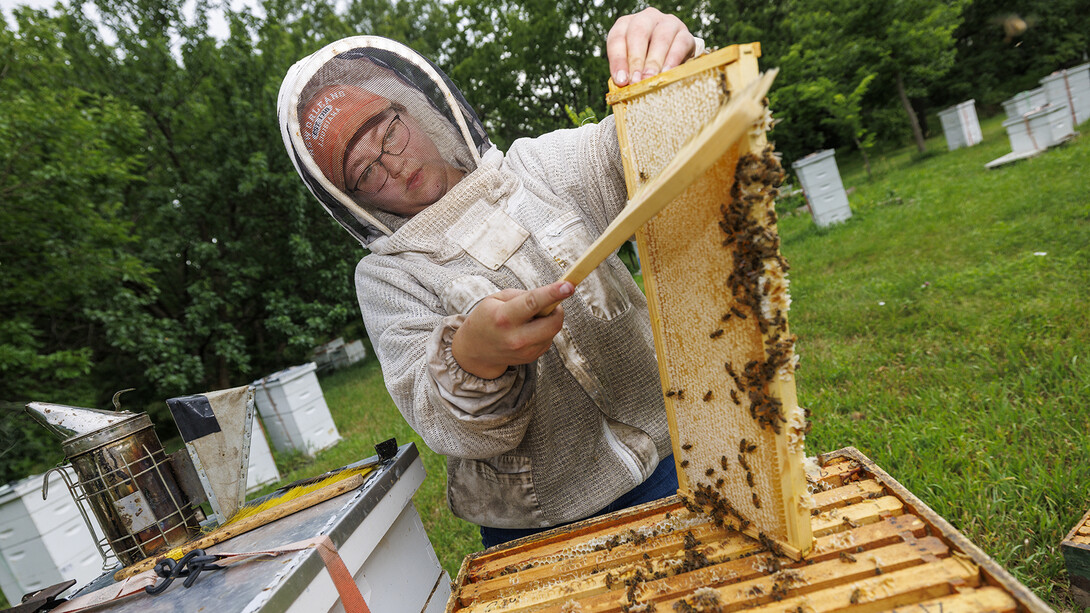
Each summer, students in Judy Wu-Smart’s bee laboratory harvest honey made by their winged colleagues to sell to the public.
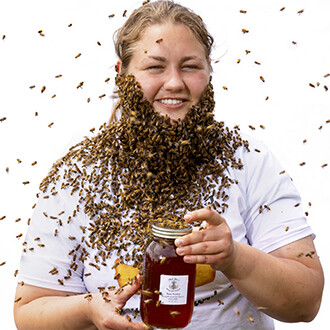
The golden nectar is an outgrowth of the researchers’ primary work and its sales help further the team’s mission, said Shelby Kittle, a graduate student who manages the lab’s honey sales.
“Even though the honey sales are a byproduct of what we do at the lab, it gives us an opportunity to further our reach in the research and education sectors,” Kittle said. “It gives us the opportunity to provide classes that are free and do research that is helping improve the beekeeping industry.”
The lab’s honey comes from hives used for educational purposes like public programming and beekeeping classes on East Campus and Kimmel Orchard in Nebraska City. In 2023, the buzzy pollinators from nearly 100 colonies produced two tons of honey. The team sells bottles in a variety of sizes up to large jugs and even prepares sections of honeycomb for sale.
Proceeds go toward a fund for professional development opportunities for students in the lab like conferences, smaller research projects and equipment. The work also provides valuable professional experience in beekeeping, Kittle said.
“There are a lot of people who are very enthusiastic about bees, but if you have beekeeping experience, it helps you stand out a little bit more,” she said.
The bees do most of the work on the actual production side of things, Kittle said; the researchers’ main job is to keep the colony healthy and strong. Hives are placed near plants for the bees to visit, and they bring back nectar to start lowering the moisture content and start making what will become honey.
“They work it like taffy to dehydrate it, they’ll fan their wings in the hive and once it reaches a certain moisture content, the bees will cap it with a thin layer of wax,” Kittle said. “That signifies to us as beekeepers that it’s ready to harvest.”
Members of the lab check the hives and look for ones that are completely capped with wax, and then they bring the frames back to the lab to extract the honey. They scrape off the layer of wax and place the frame into an extractor that spins the honey out of the comb. After extraction, they strain the honey and bottle it. They also test the moisture content to make sure it’s ready for distribution, but Kittle said the bees are the most efficient at getting nectar to the right point for honey.
“They know better than we do anyway,” she said.
A number of environmental variables affect production. Temperature, rainfall, proximity to plants and more can change factors like the color, flavor and texture of the honey, as well as how much the bees are making from year to year.
“We want a strong population in order for them to produce so we have the opportunity to take the extra,” Kittle said. “We always leave about 100 pounds of honey on the hive for the winter.”
Kittle said the bees’ creations are useful for honey but also for a variety of other projects. Beekeeping can be a productive and peaceful hobby for people with a range of interests, she said.
“If you’re interested in personal care products, you can make lotions; if you’re interested in crafting, you can do candles; if you’re a woodworker, you can build boxes; or if you’re a biologist, just enjoy the bees,” she said. “I really enjoy just watching the bees.”
Kittle has been keeping bees in some capacity for 10 years and said tasting the fruit of her and the bees’ labor is always a fun aspect of the job. She said she’s always impressed by their ability to solve puzzles, tell time and even recognize faces.
“I think they’re smart, and they have their own personalities,” she said. “They’re very interesting creatures, and they never cease to amaze me."
